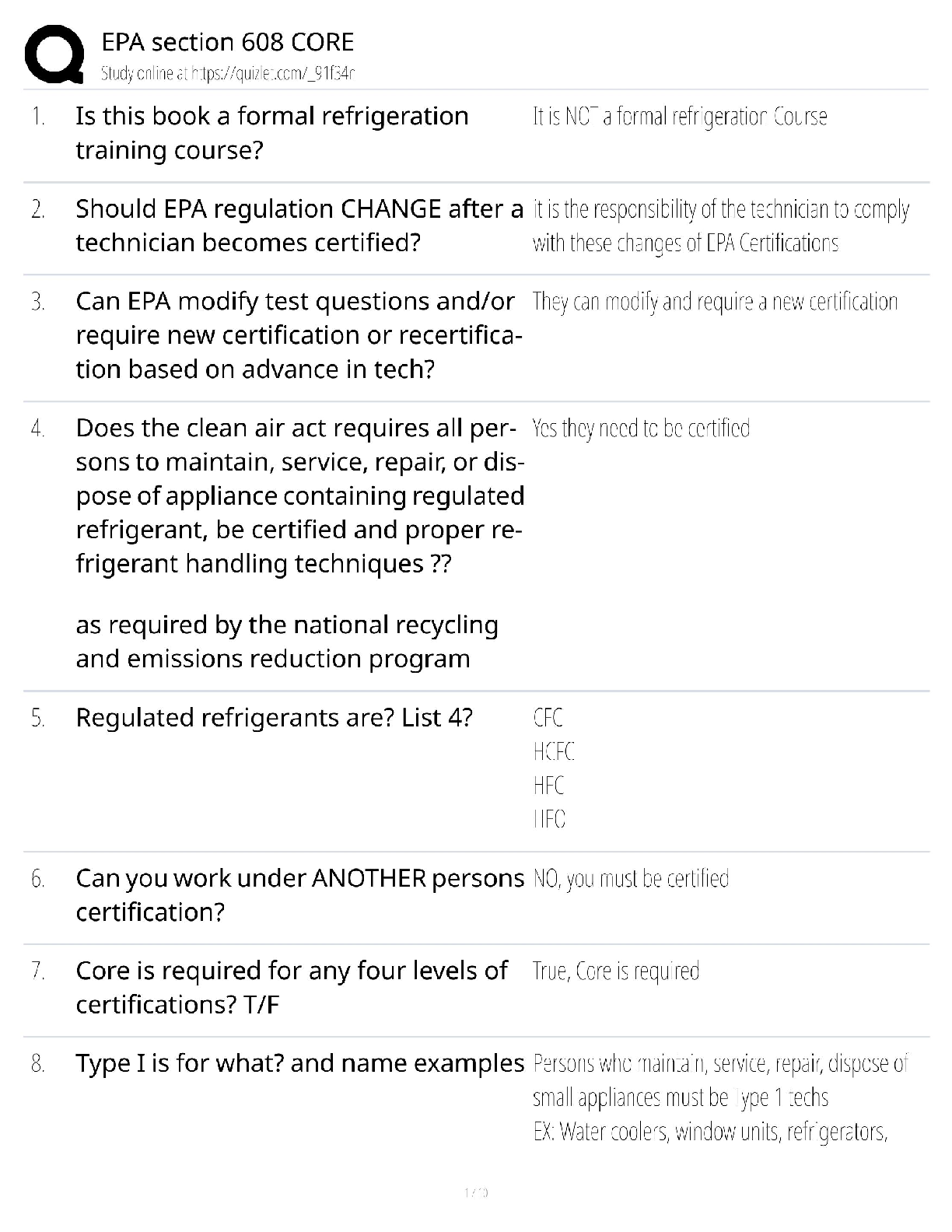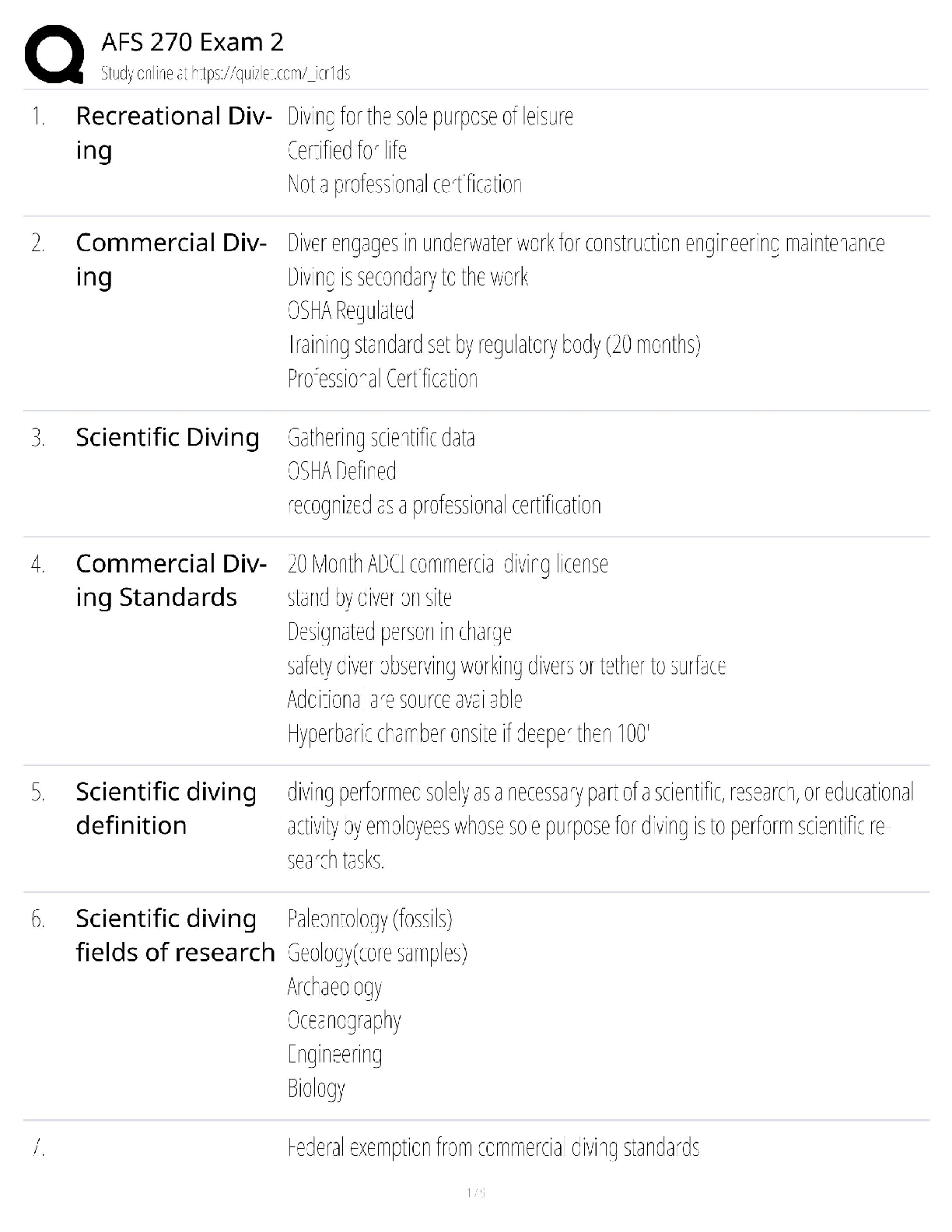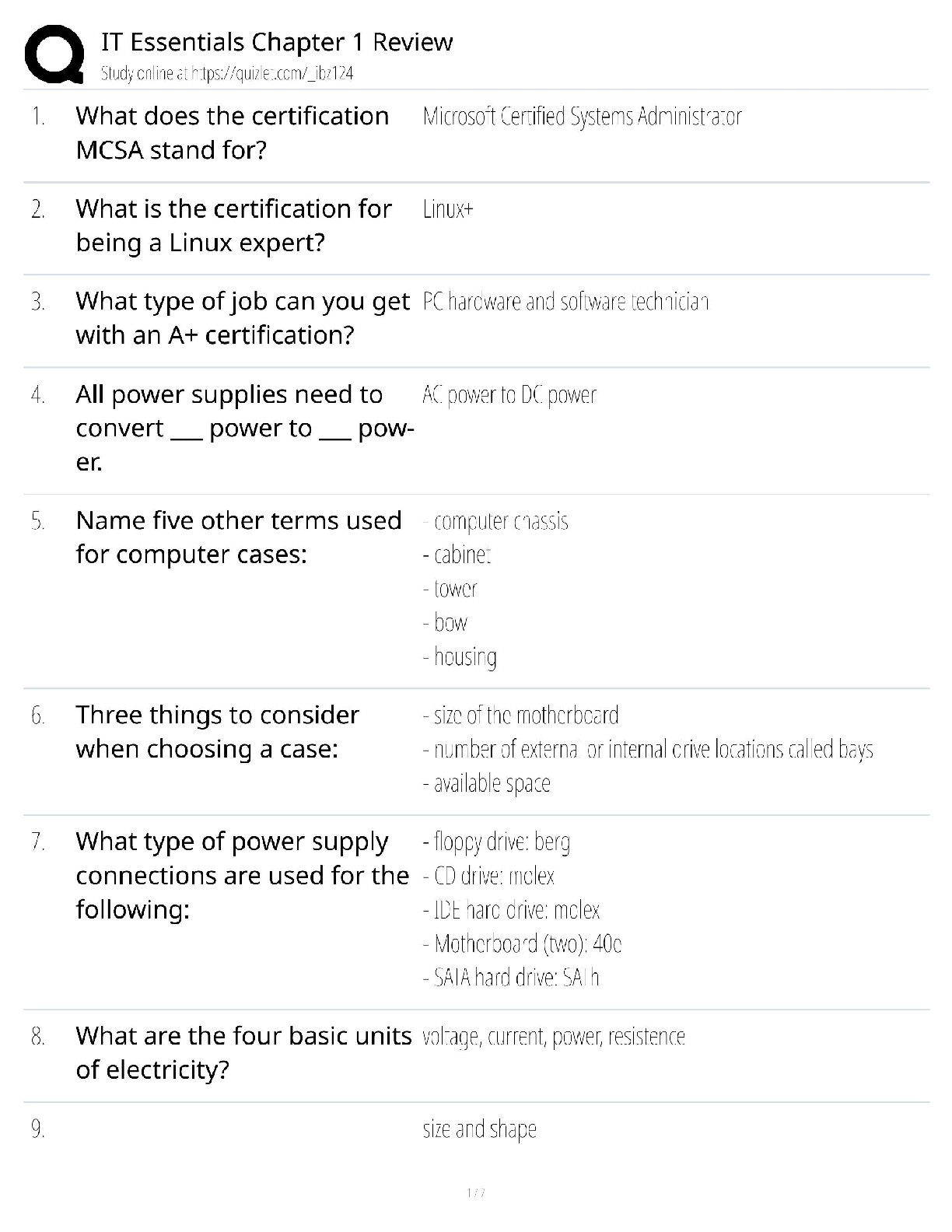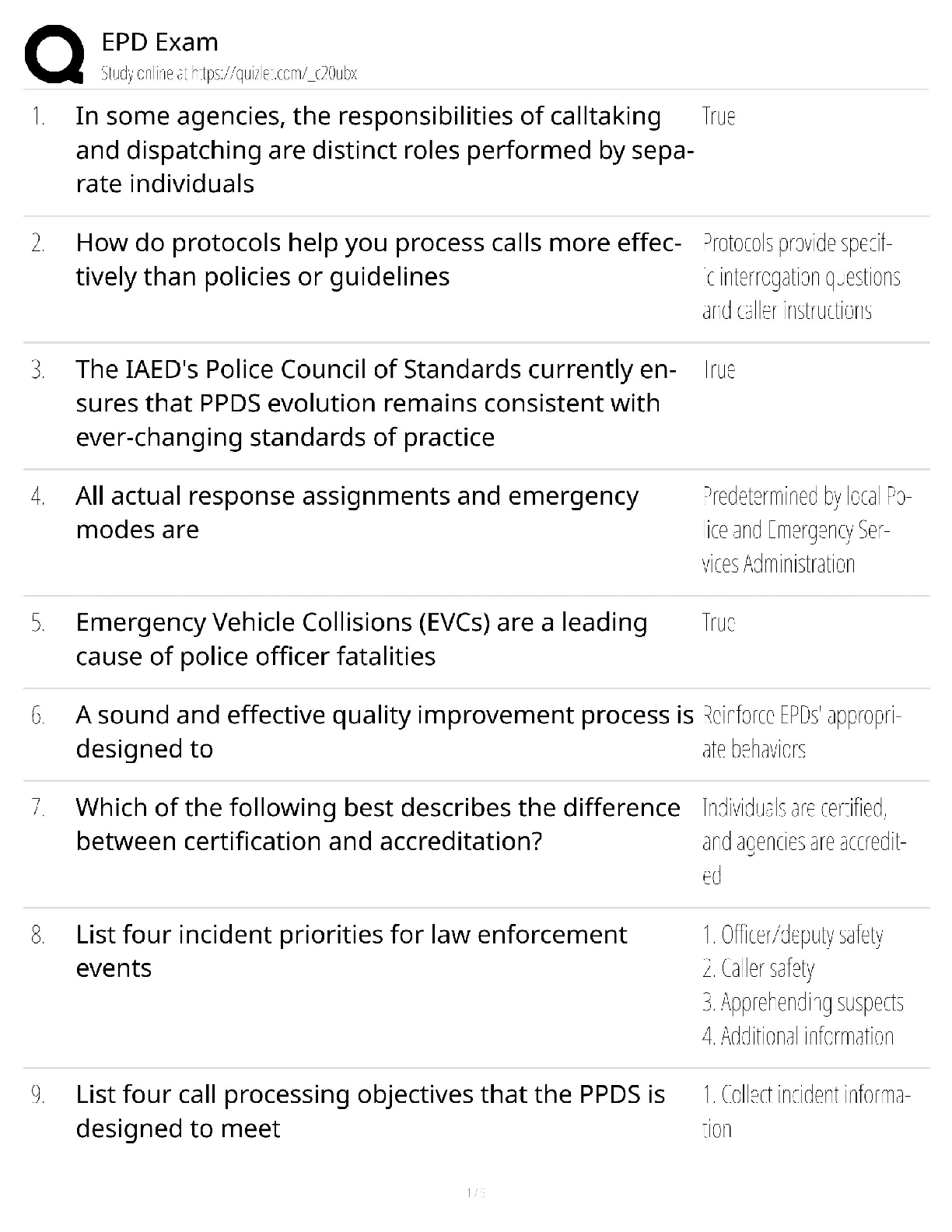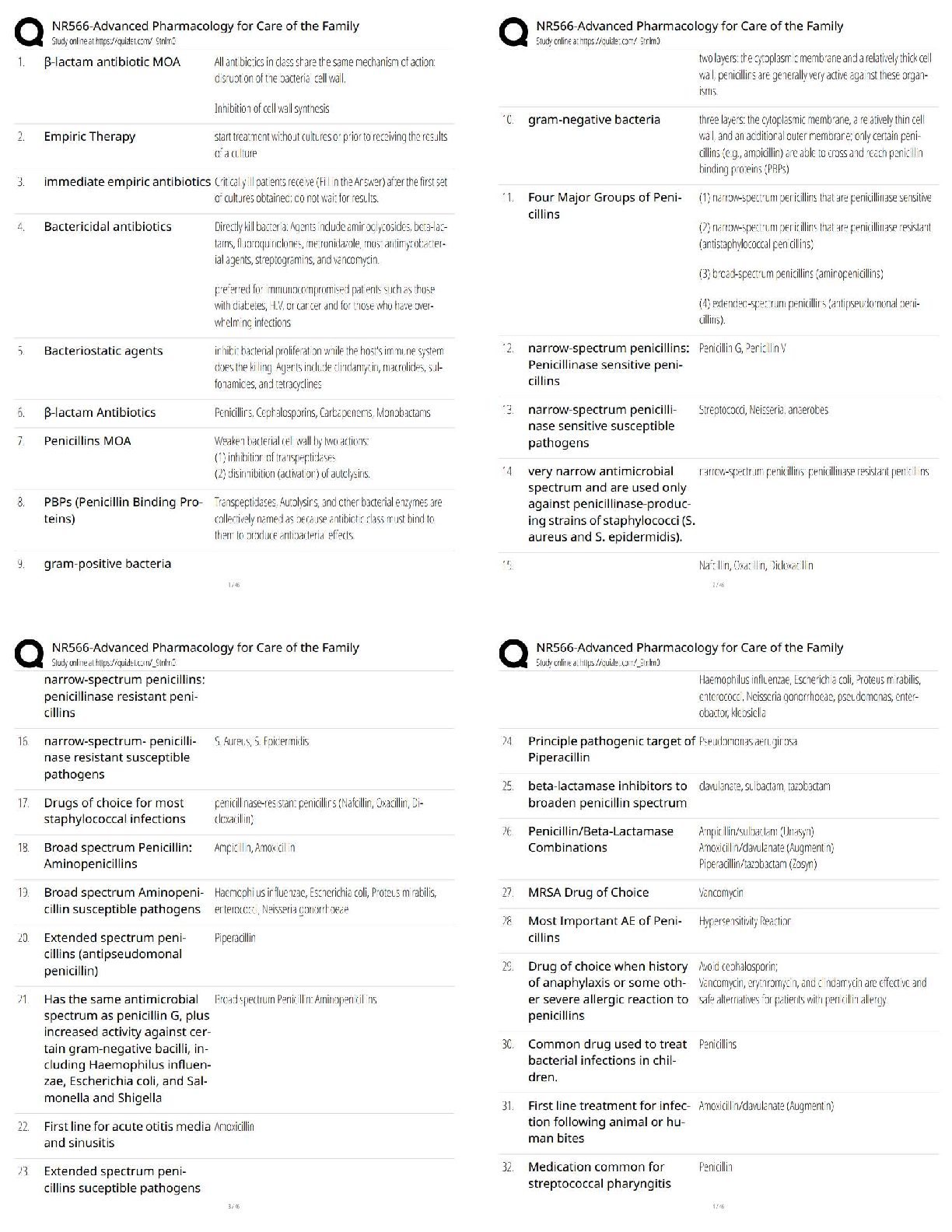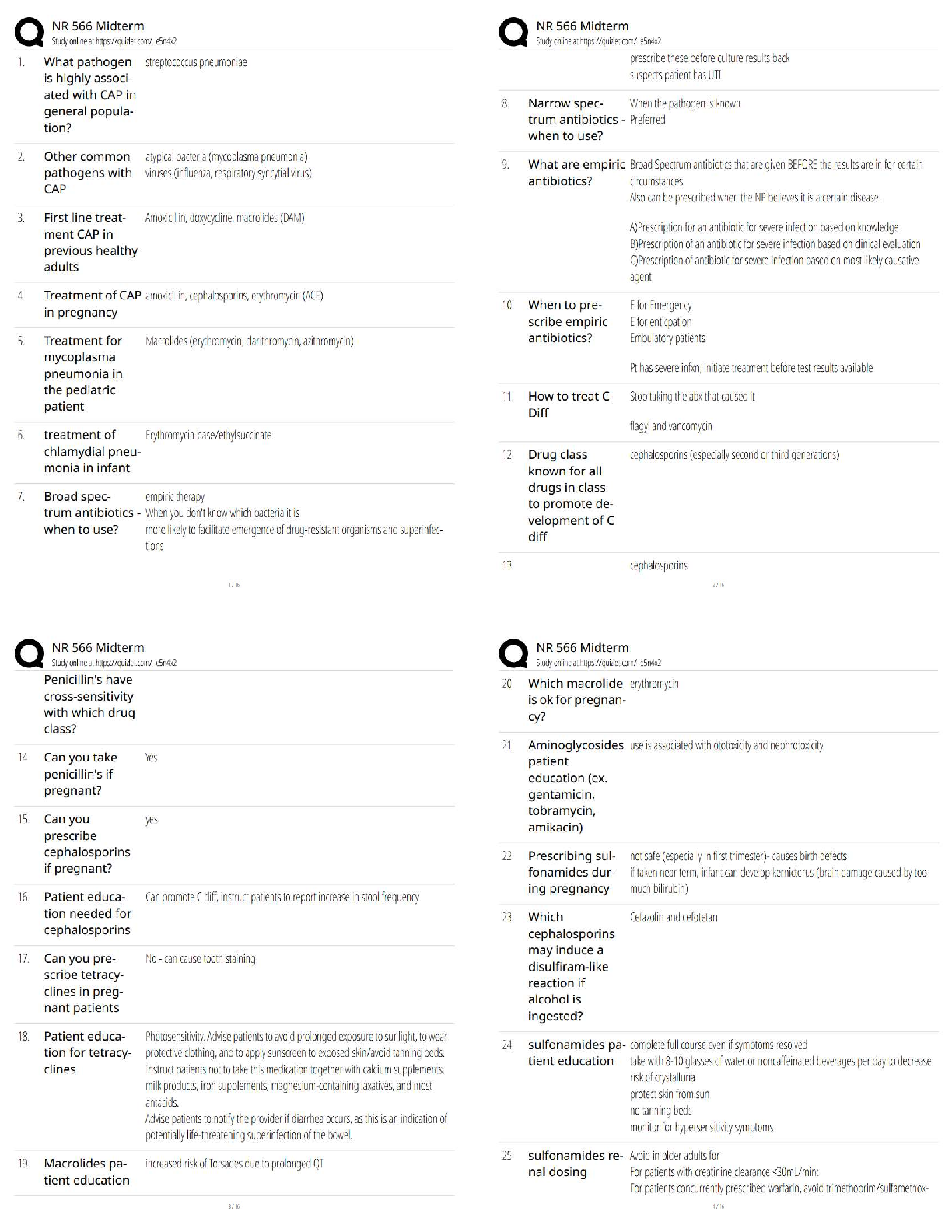Software Engineering > QUESTIONS & ANSWERS > RPA Exam Latest Updated 2022 Rated A+ (All)
RPA Exam Latest Updated 2022 Rated A+
Document Content and Description Below
RPA Exam Latest Updated 2022 Rated A+ What does RPA stand for? ✔✔Robotic Process Automation What is Robotic Process Automation (RPA)? ✔✔tool that performs if, then, else statements on stru ... ctured data, typically a combination of user interface (UI) interactions, or by connecting to APIs to drive client servers, mainframes or HTML code How does an RPA operate? ✔✔By mapping a process in the RPA tool language for the software "robot" to follow via computer pathways and various data repositories, with runtime allocated to execute the script by a control dashboard How are RPAs designed to act? ✔✔Designed to mimic the same "manual" paths taken by a human using a combination of user interface (UI) interactions or descriptor technologies Objective of RPA ✔✔To operate certain tasks in place of a human How can an RPA tool be triggered? ✔✔Manually or Automatically What activities can an RPA do? ✔✔1) Move or populate data between prescribed locations 2) Document audit trails 3) Conduct calculations 4) Perform actions 5) Trigger downstream activities What are the main factors that firms take into account to invest in an RPA initiative? ✔✔1) Reduce Costs 2) Improve Delivery 3) Consistent Quality Where does RPA fall in automation options? x-axis = Structured Data / Unstructured Data y-axis = Assist Employees' Tasks / Replace Employees' Tasks ✔✔Equally between Assist Employees and Replace Employees, and far left on Structured Data side What is the potential for the RPA industry? ✔✔*Significant* 1) List of actions a robot can do can be over 600 in some solutions - Deloitte 2) As many as 45% of activities humans are paid to do can be automated == $2 trillion in annual wages - McKinsey 3) 60% of occupations could have 30% or more of their constituent activities automated - McKinsey Market leaders in the RPA software ✔✔1) Automation Anywhere 2) Blue Prism 3) UiPath What are some differences between RPA tools i.e. from different providers ✔✔1) Unattended deployment versus attended deployment 2) Crafting "instructions" for the bot to run 3) Generic RPA tools or process-specific automation tools 4) Some limited or no artificial intelligence (AI) or machine-learning capabilities 5) Price point and licensing agreements Simplified view of steps to implement RPA ✔✔1) A process, or a set of processes, is deemed to be a good candidate for RPA 2) A "process developer" creates the detailed set of steps for the automation bot 3) The bot becomes operational and uses software licenses to perform the steps 4) The bot is centrally monitored for performance 5) Performance improves and everybody is happy RPA Step 1 *Selecting a good process candidate* ✔✔- Understanding and documenting processes becomes fundamental NOTE: Not having standardized, repetitive tasks decreases the success of an RPA implementation - Focus on "swivel chair integration" dealing with structured data NOTE: That is, a "paper pushing" situation - Verify if COTS options are not available *swivel chair*- taking data from one solution and putting it into another *paper pushing*- routine task *COTS*- commercial off-the-shelf == purchased a package solution and adapt it to suite your needs RPA Step 2 *Creating the bot script* ✔✔- Train people so that they can use the tool properly NOTE: Ideally, the scripts would be created by business people, not IT professionals - Have documented processes that can be translated into scripts NOTE: If the process is well understood and documented, then it is simply a matter of translating the process into the RPA software - Understand the interfaces between applications NOTE: How to transfer data from one application to another application - Test, test again, and test even more RPA Step 3 *Making the bot operational* ✔✔- Redesign processes to support the bot and the human work NOTE: For example, dealing with exceptions - Understand the security implications NOTE: Bots need credentials too and even background checks at times - Understanding governance as it applies to the bot and its actions NOTE: Who makes decisions about the bot? What is the "chain of command"? - Have a deployment roadmap NOTE: will you take the bot from design to production? RPA Step 4 *Monitoring bot performance* ✔✔- Have personnel dedicated to managing bots NOTE: Those can easily be located abroad, working on a control room - Have software and analytics to understand bot performance NOTE: You also need to understand your automation targets - Have contingency plans for bots who stop working ("get sick or go on vacation") NOTE: Quickly audit what is wrong and fix the problem to have the bot back in action Target revenue-generation while reaching for cost-savings ✔✔- Formalize an enterprise automation roadmap and make the business case for RPA realistic and accessible NOTE: Communicate with the rest of your organization about RPA plans - Avoid focusing on RPA as simply a way to reduce labor costs NOTE: If employees are moved to other tasks, then cost reduction will not be achieved - Instead, think about ways in which RPA can be used to generate revenue and improve quality NOTE: Still target some quick wins to demonstrate potential Automation should be a business initiative supported by IT ✔✔- Ultimately, business users should be responsible for creating the bots - However, IT still retains a fundamental role NOTE: Policies ( e.g., security, access, auditing, "coding") need to be created, promoted NOTE: Systems might be changed, new forms and interfaces created, operational loading managed, etc. - Remember: only the business side can realize the benefits from a technology solution NOTE: RPA should not be seen as an IT initiative and the role of the IT team should be formalized early T/F RPA should be applied to areas within a business process that are customer centered ✔✔FALSE RPA should be applied to areas within a business process that are *rule driven* T/F RPA has the potential to scale quickly ✔✔TRUE What happens when RPA works? ✔✔Companies quickly go from a couple of bots to dozens of bots in little time When should preparation for scaling come? ✔✔Very early, including personnel to monitor bots Critical consideration to deploy RPA at scale ✔✔1) *Governance*- business, technology, and risk 2) *Architecture* 3) *Robotic Asset Management* 4) *Business Analysis*- demand and reengineering 5) *Transparency* of benefits and robotic activity 6) *Risk, Controls, and Security* 7) *Methodology* and sustainability/ decision criteria 8) *Change* and Automamation Anxiety 9) *IT Processes to Change* Trends in the RPA Industry ✔✔- Renting RPA or on-demand SaaS - An expanding set of RPA vendors - Transition services will grow to help users switch from one RPA tool to another - More specialist automation service companies - Preconfigured scripts of business-process "best/better practices" - Process mining, process discovery and business analysis tools - "AI" functionality is being incorporated How can Intelligent automation affect RPA? ✔✔The emerging technology iteration connect RPA with AI to offer bots that can go beyond following instruction slide 25 Industry Expectations for RPA ✔✔1) 28% of firms have automation-deployed technology today 2) 40% of management teams think automation is the most enabling enterprise technology 3) 50% of global IT services centers are actively pursuing automation pilots 4) $4.9 Billion = the estimated size of the global automation market by 2020 What causes RPA efforts to fail? ✔✔1) Not considering RPA as business-led, as opposed to IT led 2) Not having an RPA business case and postponing planning until after proof-of-concepts (POCs) or pilots 3) Underestimating what happens after processes have been automated 4) Treating Robotics as a series of automations vs. an end-to-end change program 5) Targeting RPA at the wrong processes 6) Applying traditional delivery methodologies 7) Automating too much of a process or not optimizing for RPA 8) Forgetting about IT infrastructure 9) Assuming RPA is all that's needed to achieve a great ROI 10) Assuming skills needed to create a PoC are good enough for production automations Use Cases ✔✔2nd PPT Slides 4-12 [Show More]
Last updated: 3 years ago
Preview 1 out of 7 pages
.png)
Buy this document to get the full access instantly
Instant Download Access after purchase
Buy NowInstant download
We Accept:

Also available in bundle (1)
Click Below to Access Bundle(s)
.png)
RPA Bundled Docs with complete solution
Geology RPA questions and practice exam 2022 with complete solution RPA Advanced Developer Certification Exam 2022 with complete solution RPA Developer Foundation Training - Full Set 2022 Questions an...
By Nutmegs 3 years ago
$20
19
Reviews( 0 )
$9.00
Can't find what you want? Try our AI powered Search
Document information
Connected school, study & course
About the document
Uploaded On
Sep 21, 2022
Number of pages
7
Written in
All
Additional information
This document has been written for:
Uploaded
Sep 21, 2022
Downloads
0
Views
218


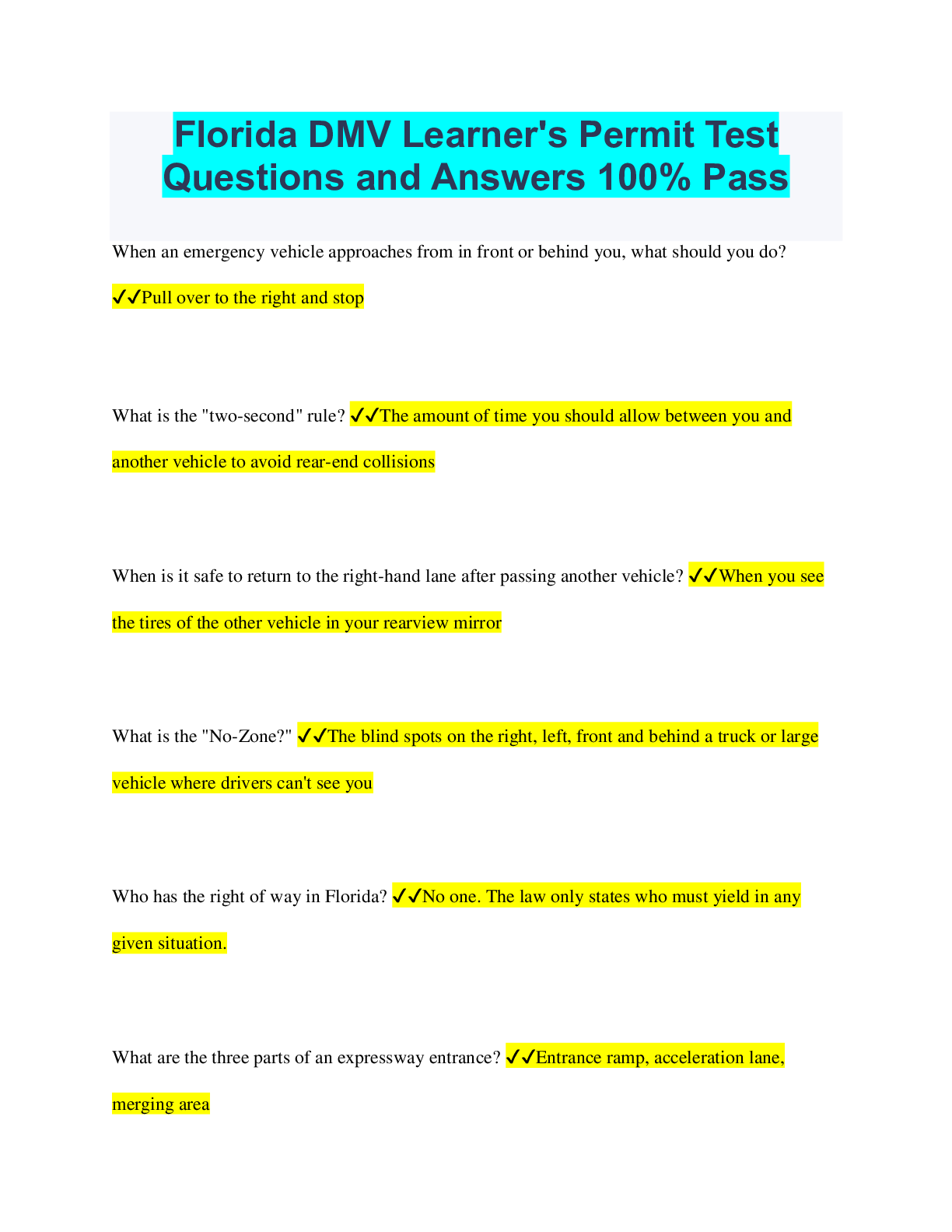
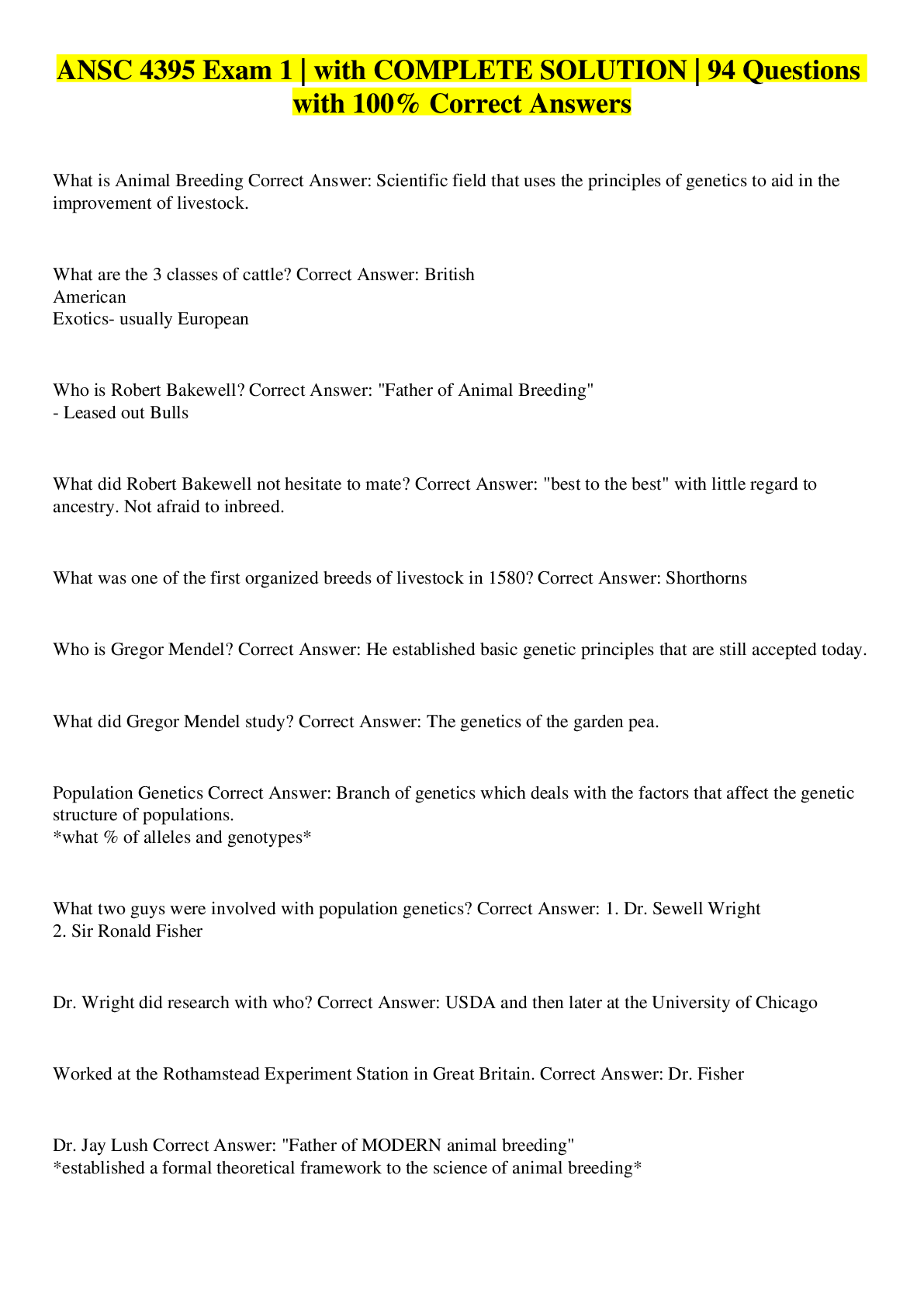

.png)







